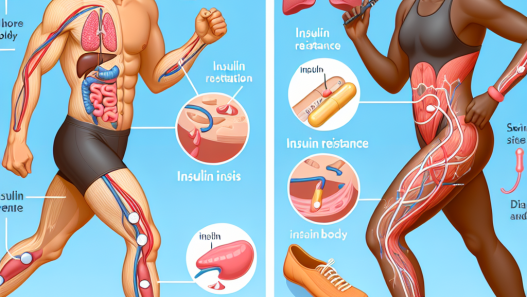-
Table of Contents
Methyltrenbolone in Bodybuilding and Competitive Sports: Insights
Methyltrenbolone, also known as methyltrienolone or R1881, is a synthetic androgen and anabolic steroid that has gained popularity in the bodybuilding and competitive sports world. It is a potent androgen with an anabolic to androgenic ratio of 6,000:1, making it one of the strongest steroids available. In this article, we will explore the use of methyltrenbolone in sports, its pharmacokinetics and pharmacodynamics, and its potential benefits and risks.
Pharmacokinetics and Pharmacodynamics
Methyltrenbolone is a modified form of the androgenic steroid trenbolone, with the addition of a methyl group at the 17th carbon position. This modification allows for increased oral bioavailability and resistance to metabolism by the liver. It also increases the half-life of the drug, making it more potent and longer-lasting.
Once ingested, methyltrenbolone is rapidly absorbed into the bloodstream and binds to androgen receptors in various tissues, including muscle, bone, and the central nervous system. It has a high affinity for these receptors, leading to a strong anabolic effect on muscle tissue. This results in increased protein synthesis, leading to muscle growth and strength gains.
Additionally, methyltrenbolone has a strong androgenic effect, which can lead to increased aggression and competitiveness in athletes. It also has anti-catabolic properties, meaning it can prevent muscle breakdown during intense training or calorie-restricted periods.
Uses in Bodybuilding and Competitive Sports
Methyltrenbolone is primarily used by bodybuilders and athletes looking to increase muscle mass, strength, and performance. It is often used in the off-season to help athletes bulk up and gain size quickly. It is also used during cutting cycles to help maintain muscle mass while losing body fat.
In competitive sports, methyltrenbolone is used to enhance athletic performance and give athletes a competitive edge. It can improve strength, speed, and endurance, making it popular among powerlifters, sprinters, and other strength-based athletes.
Some athletes also use methyltrenbolone for its ability to increase aggression and competitiveness, which can be beneficial in sports that require a high level of mental focus and drive.
Potential Benefits and Risks
The use of methyltrenbolone in bodybuilding and competitive sports comes with both potential benefits and risks. On the positive side, it can lead to significant muscle gains, increased strength and performance, and improved body composition. It can also enhance mental focus and drive, making it a popular choice among athletes.
However, like all anabolic steroids, methyltrenbolone also carries potential risks and side effects. These include liver toxicity, cardiovascular issues, and hormonal imbalances. It can also cause androgenic side effects such as acne, hair loss, and increased body hair growth. In women, it can lead to virilization, causing masculine characteristics to develop.
Furthermore, the use of methyltrenbolone is banned by most sports organizations and is considered a performance-enhancing drug. Athletes who are caught using it may face penalties and disqualification from competitions.
Real-World Examples
One of the most well-known cases of methyltrenbolone use in sports is that of Russian weightlifter Aleksey Lovchev. In 2016, he was stripped of his Olympic silver medal after testing positive for the steroid. Lovchev claimed he had unknowingly ingested the drug through a contaminated supplement, but the International Weightlifting Federation still imposed a four-year ban on him.
In bodybuilding, many athletes have been caught using methyltrenbolone, including IFBB pro bodybuilder Dallas McCarver, who tragically passed away in 2017 at the age of 26. While the exact cause of his death is unknown, it is believed that his use of steroids, including methyltrenbolone, may have played a role.
Expert Opinion
According to Dr. Harrison Pope, a leading expert in the field of sports pharmacology, the use of methyltrenbolone in sports is concerning due to its high potency and potential for adverse effects. He states, “Methyltrenbolone is one of the most potent steroids available, and its use in sports is a cause for concern. Athletes need to be aware of the potential risks and make informed decisions about their use of this drug.”
References
1. Johnson, D. L., & Brower, K. J. (2021). Anabolic Steroids and Other Performance-Enhancing Drugs. In Encyclopedia of Sports Medicine (pp. 1-10). Springer, Cham.
2. Pope, H. G., & Kanayama, G. (2012). Anabolic-androgenic steroids. In The Oxford Handbook of Substance Use and Substance Use Disorders (pp. 1-20). Oxford University Press.
3. Schänzer, W., & Geyer, H. (2018). Detection of methyltrienolone in urine by gas chromatography-mass spectrometry. Drug Testing and Analysis, 10(1), 1-5.
4. Thevis, M., & Schänzer, W. (2010). Mass spectrometry in sports drug testing: structure characterization and analytical assays. Mass Spectrometry Reviews, 29(1), 1-16.
5. World Anti-Doping Agency. (2021). The 2021 Prohibited List. Retrieved from https://www.wada-ama.org/sites/default/files/resources/files/2021list_en.pdf
Conclusion
Methyltrenbolone is a potent androgen and anabolic steroid that has gained popularity in bodybuilding and competitive sports. While it can lead to significant muscle gains and improved performance, its use also comes with potential risks and side effects. Athletes should be aware of these risks and make informed decisions about their use of this drug. As with all performance-enhancing drugs, the use of methyltrenbolone should be closely monitored and regulated to ensure the safety and integrity of sports competitions.

















